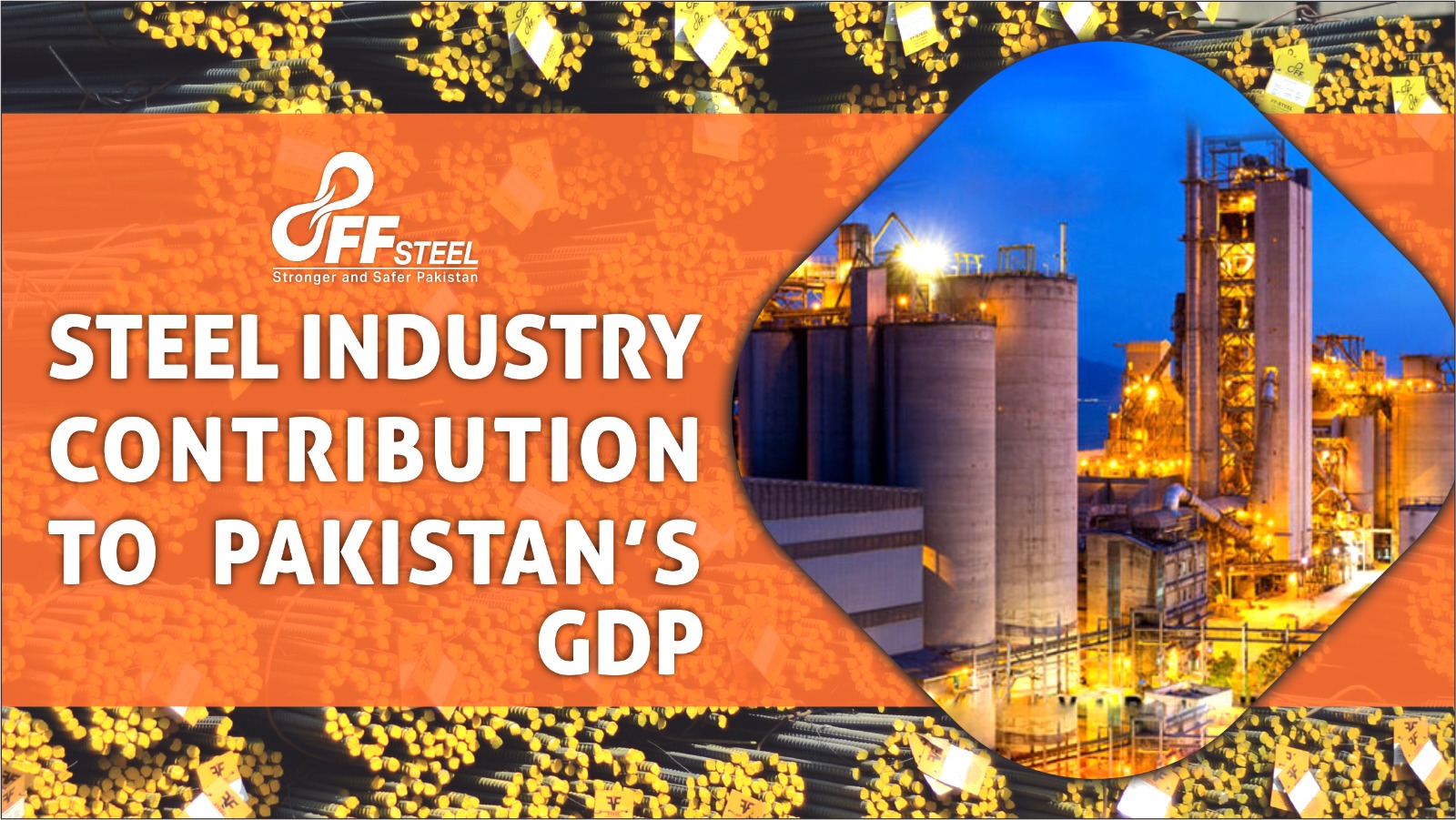
Steel Industry Contribution to Pakistan’s GDP
Steel stands out as one of the most essential materials across various sectors of the economy, including construction, transportation, manufacturing, and energy. Its pivotal role in the economic development of Pakistan cannot be overstated. The steel industry significantly contributes to the country's GDP and exerts a profound impact on diverse sectors. Over the past five years, this sector has demonstrated remarkable growth, with statistics underscoring its positive influence on the national exchequer. It also serves as a significant source of employment, income, and tax revenues. In this blog post, we will delve into how the steel industry in Pakistan is bolstering the nation's GDP and enriching the national exchequer.
According to the Pakistan Credit Rating Agency (PACRA), the steel industry holds a share of approximately 5.4% in the large-scale manufacturing (LSM) sector, which itself contributes around 9.5% to the GDP. With more than 100,000 workers employed across over 400 industrial units nationwide, the steel industry plays a crucial role in job creation. In 2019, the industry boasted a production capacity of 3.3 million tons, representing 0.18 percent of global production. Key players in the organized sector include FF Steel, Amreli, Agha, Mughal, Naveena, and Ittefaq Steels.
Moreover, the steel industry serves as a significant revenue source for the national exchequer through various taxes, royalties, and duties. PACRA reports that the steel sector contributes approximately 9.1% to the GDP, with an estimated year-on-year growth of 10.5% in FY22. Around 30% of the corporate tax is paid by the steel sector, collected from 30 public listed companies directly or indirectly associated with the industry. Additionally, the sector actively supported COVID-19 relief efforts, awareness campaigns, and vaccination drives in Pakistan, allocating roughly Rs 22,000 crore to corporate social responsibility (CSR) projects in FY 2021.
Expectations for the steel industry's continued growth remain high, driven by increasing demand for steel products both domestically and internationally. The government has also implemented several initiatives to bolster the sector, including corporate tax rate reductions, incentives for domestic production, and the introduction of the Development of Enterprise and Service Hubs (DESH) Bill aimed at revamping existing Special Economic Zones.
In conclusion, as sturdy as the steel it produces, Pakistan's steel industry stands tall as a cornerstone of economic prosperity. With its foundations deeply rooted in construction, transportation, manufacturing, and energy, this industry forges a path of growth, bolstering the nation's GDP and enriching the national exchequer. From towering skyscrapers to robust infrastructure, steel shapes the landscape of progress. As we look ahead, the future gleams bright with promise, as the steel industry continues to forge ahead, driving innovation, prosperity, and a stronger, more resilient Pakistan.
(1) STEEL SECTOR - PACRA. https://www.pacra.com/sector_research/Steel%20Sector%20Post%20Review%20Update_1601130113.pdf.
(2) LSM - Pakistan Steel Industry Outlook - PIDE - Pakistan's premier .... https://pide.org.pk/research/lsm-pakistan-steel-industry-outlook/.
(3) undefined. https://www.pacra.com/sector_research/PACRA%20Research%20-%20Steel%20-%20Sep.
(4) Pakistan - GDP distribution across economic sectors 2022 - Statista. https://www.statista.com/statistics/383256/pakistan-gdp-distribution-across-economic-sectors/.
(5) mwpbnp.pk. https://bing.com/search?q=Pakistan+steel+industry+GDP+contribution.
(6) mwpbnp.pk. https://mwpbnp.pk/blog6.html.
(7) Sector Study - PACRA. https://www.pacra.com/sector_research/PACRA%20Research%20-%20Steel%20-%20Sep'21_1630576235.pdf.
(8) Sector Study - PACRA. https://www.pacra.com/sector_research/PACRA%20Research%20-%20Steel%20-%20Sep'22_1662124643.pdf.
